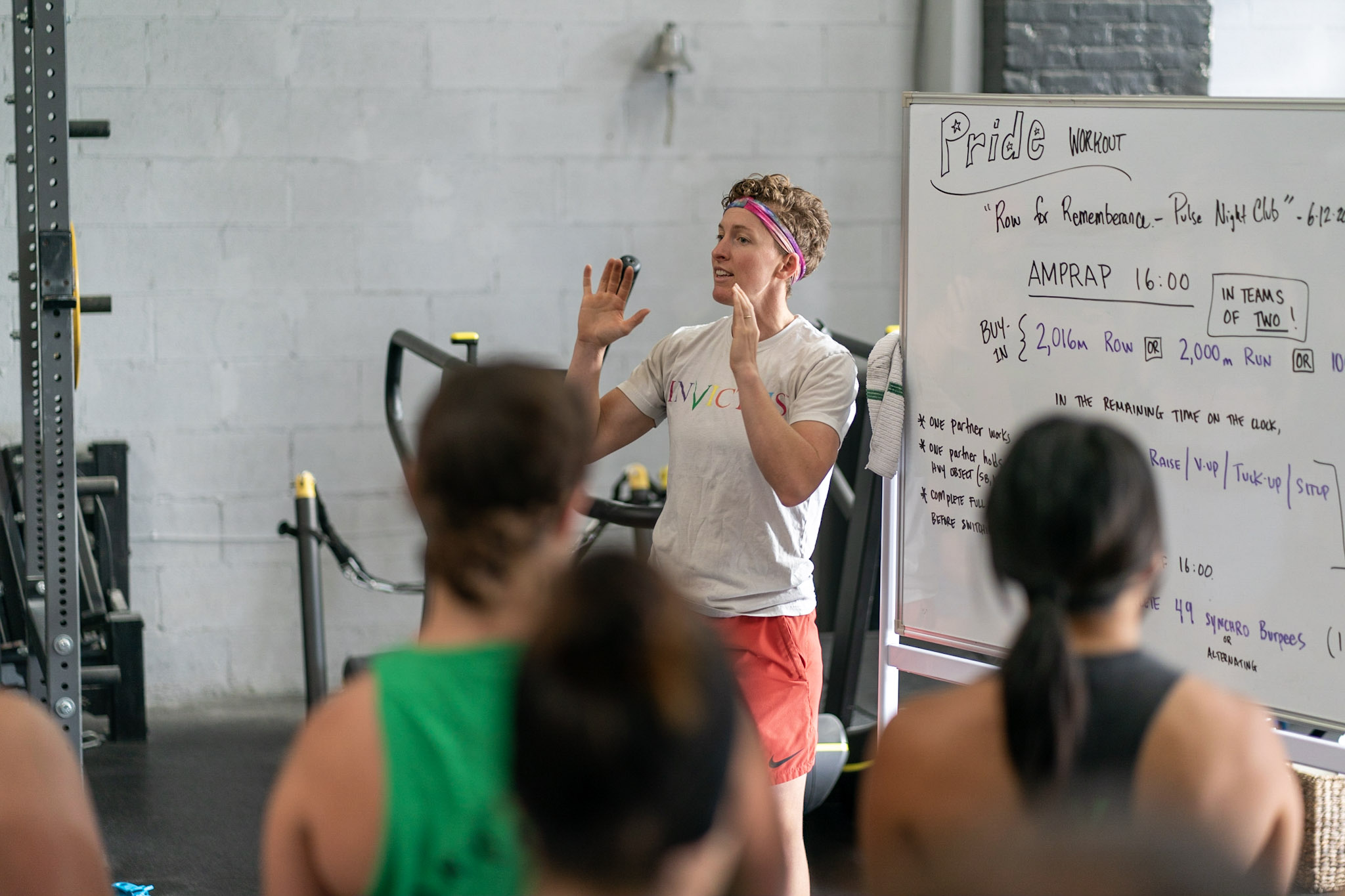
5 Principles to Follow When Returning to Training After Significant Time Off
Written by Kirsten Ahrendt
True story – I took a 4-week training hiatus.
I exercised Zero. Zilch.
I have no regrets. Zero. Zilch.
My son Micah, was born last month and every fiber of my being has been focused on absorbing and witnessing his magical born-from-supernova-stardust existence. From sleeping, to crying to pooping – it’s all magical. Except at 2am, at which point it is only semi-magical. But even then…
Parenthood or not, maybe you can relate to taking extended time (> 3-4 weeks) away from training? It can occur due to:
- Injury
- Illness
- Personal life events
- Shifts in professional focus
- Burnout caused by overtraining
- Falling out of the habit for an extended period of time AFTER any of the above
Whatever the reason – IT’S OKAY. I’m not promoting that we all take every-other month off from training, but I do believe life has rhythms and seasons; be in the one you’re in.
Below are 5 principles that I’m centering my training around as I return to the gym. You’ll find these helpful if you ever have a lapse in your own training – from weeks to months to years. Also, those of you with limited training time may benefit from implementing these.
#1 – SINGULAR TRAINING FOCUS EACH SESSION
When I go to do a strength session, I do predominantly that (strength + accessory strength volume). When I perform conditioning, I exclusively tailor the session around that stimulus. This means less “CrossFit-type” sessions that have a split training focus with time spent on both strength and conditioning. This singular focus in my training during this on-ramp period is purposeful:
- Time is limited with a newborn, I might only have 45 minutes total, and that includes a warm-up. I’ll get more physiological benefit from 30 minutes of focused strength training vs 15 minutes of rushed strength and 15 minutes of frantic, lung-burning “fun”.
- Singular focus narrows my warm-up needs which means I’m better prepared to do work more quickly and have less chance of injury.
#2 – WARM-UP IS NON-NEGOTIABLE
My hips feel tight from a lot of sitting and standing in one place and my low back is cranky from bending over to change what feels like one million diapers. At this stage in life, I’d rather be properly warmed up and get one less set in than jump into the work, feel shitty, and get injured. I’m at peace with this right now. When I’m back at the gym walking around for 5-6 hours per day, my warm-up can be shorter; for now it is longer.
#3 – MOVEMENT & VOLUME/REP SELECTION
As I ease into training volume, I’m programming:
- More whole-body or complementary (upper/lower) training pairings
- Less dynamic/plyometric/explosive exercises
- More core specific work
- Tempo prescriptions for increased time-under-tension (TUT)
- Higher rep volumes, 8-12 for lower body and upwards of 8-15 for upper body
- Isometric holds in foundational gymnastic positions (hollow/superman/chin-up/handstands)
The time-under-tension, isometrics, and whole-body exercise splits allow me to train the same muscle groups multiple times a week as I progress load and volume without overloading them on any single day. It is also friendly on tendons and ligaments which take longer to recondition than muscle fiber. I am “earning the right” to incorporate explosive/ballistic movement (box jumps, clean/snatch) or high-rep eccentric volume (i.e. – 100 wall balls).
#4 – PRIORITIZE AEROBIC VS ANAEROBIC or HITT
Aerobic capacity is the foundation that all other fitness capabilities are built upon, so I’m focused on this. HIIT style training might make me FEEL fitter because of intensity but I know that prioritizing that intensity is not the fastest way to build robust conditioning capacity. And in all honesty, my desire and drive to go FULL SEND is pretty low due to sleep deprivation. I’ll be more likely to over-tax my CNS and consequently less likely to train day after day. Building the habit of consistency without getting injured or overtraining is my main priority for the first 2-3 weeks back.
#5 – LEAVE A LITTLE IN THE TANK
This is my #1 suggestion and the hardest pill to swallow. Every day of training for the first 2 weeks, I’m leaving a little on the table, which means I could’ve gone:
- A little faster on my conditioning pieces
- A little heavier on my last set 1-2 sets of strength
- Performed an extra rep or round
The goal is consistent training volume over 2-3 weeks rather than volume or intensity on any one single day.
In week 1, my average rate of perceived effort during training was RPE of 7/10 (rate of perceived effort 1-10). In week 2, I’ll incorporate opportunities to execute an 8/10 effort.
The gradual increase of relative effort over time is what matters. This patient approach to returning to training not only feels do-able for me but also elicits excitement, rather than an overwhelming feeling of “Ugh! This is going to suck”; which is vital for consistency.
IN CLOSING:
You can follow these 5 guidelines if you’ve taken 1 month, 6 months, or a year off. The longer time you’ve taken off without consistent training, the longer this on-ramp will be. A wise person once said, “The long way is the short way”. Do it right and you’ll take the journey once. Rush it and try to cut corners to “hurry up and get fit again”, and you’ll get injured or sore and have set backs, and repeatedly be forced to start back at the beginning.
